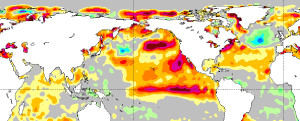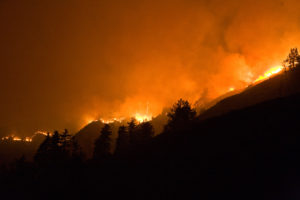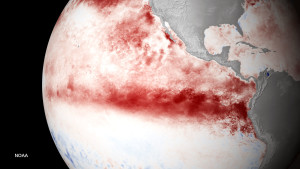
On Friday, August 30, Bay Nature lost a good friend and the Bay Area lost a great teacher of environmental science. Professor Lester Rowntree passed away at his home in the Berkeley hills after a prolonged battle with cancer. Rowntree (or Les, as he preferred to be called) was a long-time professor for the pioneering Department of Environmental Studies at San José State University, which he joined in the early 1970s. He would later serve the department as program director, and then chair, prior to his retirement in 2005. He was also a long-time friend of, and contributor to, Bay Nature, serving as a mentor and science advisor to the editorial staff in the fields of climate, weather, and wildfire science. His article on atmospheric rivers (“When It Rains, It Pours”) in the July 2015 issue of Bay Nature was an introduction to that then-unfamiliar concept for many readers and soon became a widely viewed article on Baynature.org.
Remember, they are an exotic species in the Western United States, and are rapidly increasing their geographic range and range of habitats. Are they outcompeting or excluding native species in the process? How would we know? We have done almost nothing to monitor changes in the assemblage of mushroom species in areas before and and after the incursion of death caps.
Further Reading
Pringle et al, “The ectomycorrhizal fungus Amanita phalloides was introduced and is expanding its range on the west coast of North America,” Molecular Biology 2009
Lockhart et al, “Simultaneous emergence of multidrug-resistant Candida auris on 3 continents confirmed by whole-genome sequencing and epidemiological analyses,” Clinical Infectious Diseases 2017
Battalani et al, “Aflatoxin B1 contamination in maize in Europe increases due to climate change,” Scientific Reports 2016
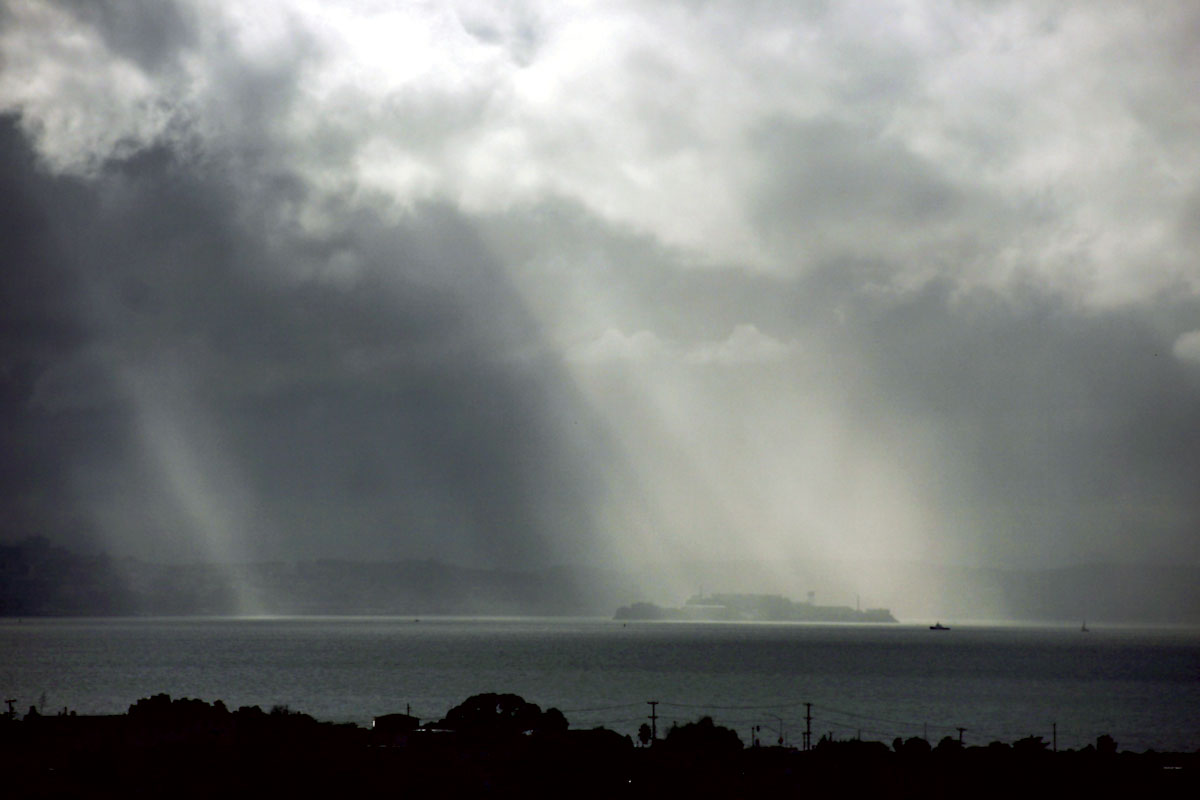
When it Rains it Pours
Read Les’s explanation of the new science of atmospheric rivers, written in the midst of California’s exceptional 2013-2015 drought.
It’s no surprise that Les would be the one to introduce our readers to a significant natural phenomenon such as atmospheric rivers. He was a big-picture thinker, an integrative and open-minded scientist who sought to understand, and then educate others about, the elemental forces that shape the physical world. And he had a particular aptitude for crafting the science into a compelling story that made it comprehensible to us lay folk, including his many students. Indeed, he would probably say that nothing gave him greater pleasure than inspiring his students to become scientists, mentoring them, and then setting them loose in the world and watching them make a difference.
I first got to know Les in early 2008 when Bay Nature was trying to figure out a way to address climate change. It had become clear that we needed to take this issue on, but how to make it relevant to our regionally focused mission? At that stage, much of climate change literature dealt with global and continental-scale impacts. Important stuff, but not at a level that corresponded to our local nature beat. It was at this point that Les offered to serve as an informal advisor on climate, and in particular, on the relatively new science of downscaling climate change impacts to the regional and local levels. He introduced us to some of the new work in this field and to some of its practitioners in the Bay Area. The result was a special supplement called “Taking the Heat: Bay Area Ecosystems in the Age of Climate Change” (January 2009), making Bay Nature one of the first general publications to summarize scientific understanding of this crucial topic.
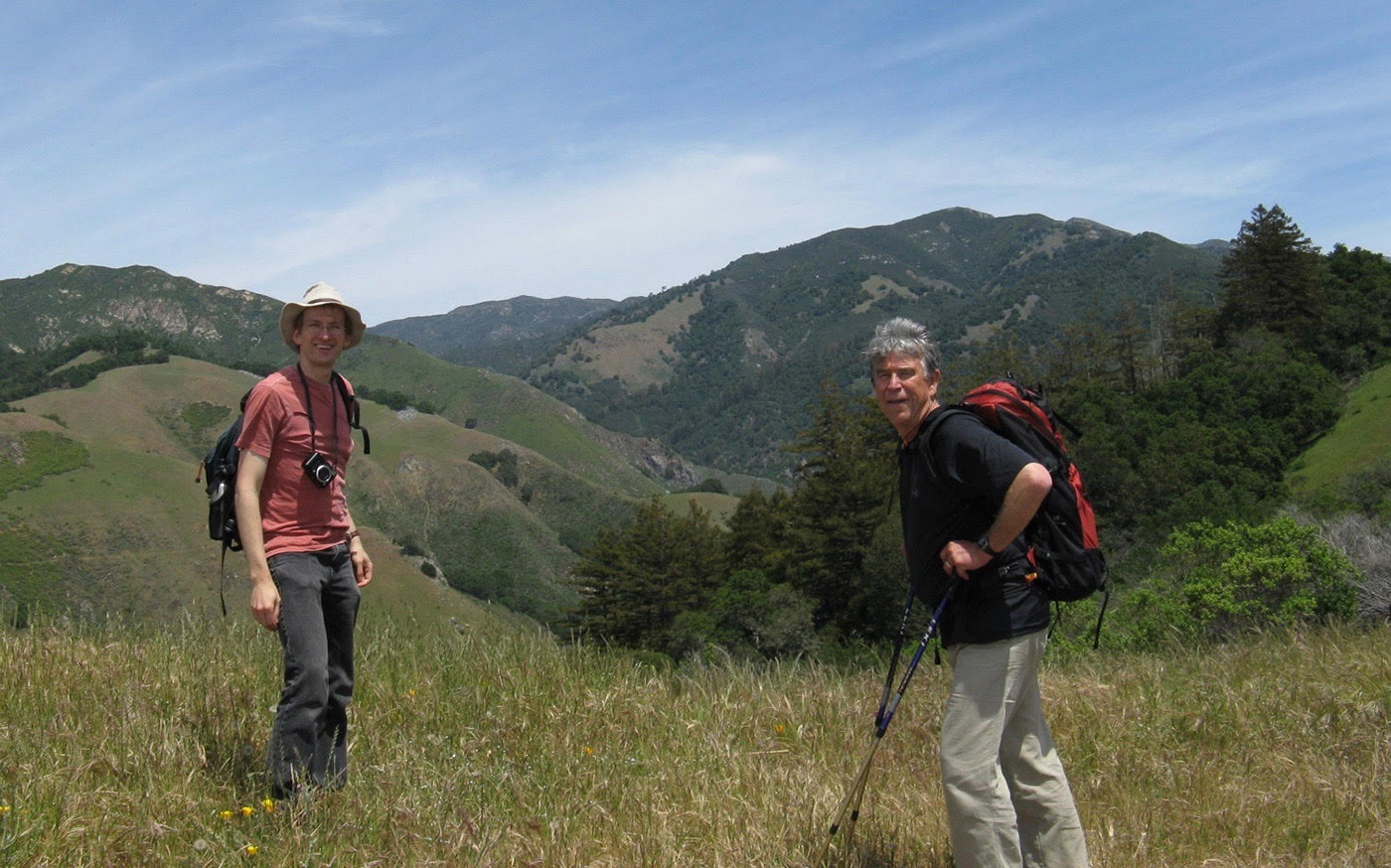
Shortly thereafter, Les proposed an article for Bay Nature about the previous spring’s devastating wildfires along the Big Sur coast. As part of his research for that story, he planned an overnight field trip to the area, basing himself at UC’s Big Creek Reserve south of Big Sur. (As a research associate at UC Berkeley, Les was able to secure accommodations there.) Fortunately, he invited me and then-editor Dan Rademacher to join him. That was too good an opportunity to pass up, and through that excursion, I got to know Les—and the Big Sur coast—a lot better.
Remember, they are an exotic species in the Western United States, and are rapidly increasing their geographic range and range of habitats. Are they outcompeting or excluding native species in the process? How would we know? We have done almost nothing to monitor changes in the assemblage of mushroom species in areas before and and after the incursion of death caps.
Further Reading
Pringle et al, “The ectomycorrhizal fungus Amanita phalloides was introduced and is expanding its range on the west coast of North America,” Molecular Biology 2009
Lockhart et al, “Simultaneous emergence of multidrug-resistant Candida auris on 3 continents confirmed by whole-genome sequencing and epidemiological analyses,” Clinical Infectious Diseases 2017
Battalani et al, “Aflatoxin B1 contamination in maize in Europe increases due to climate change,” Scientific Reports 2016
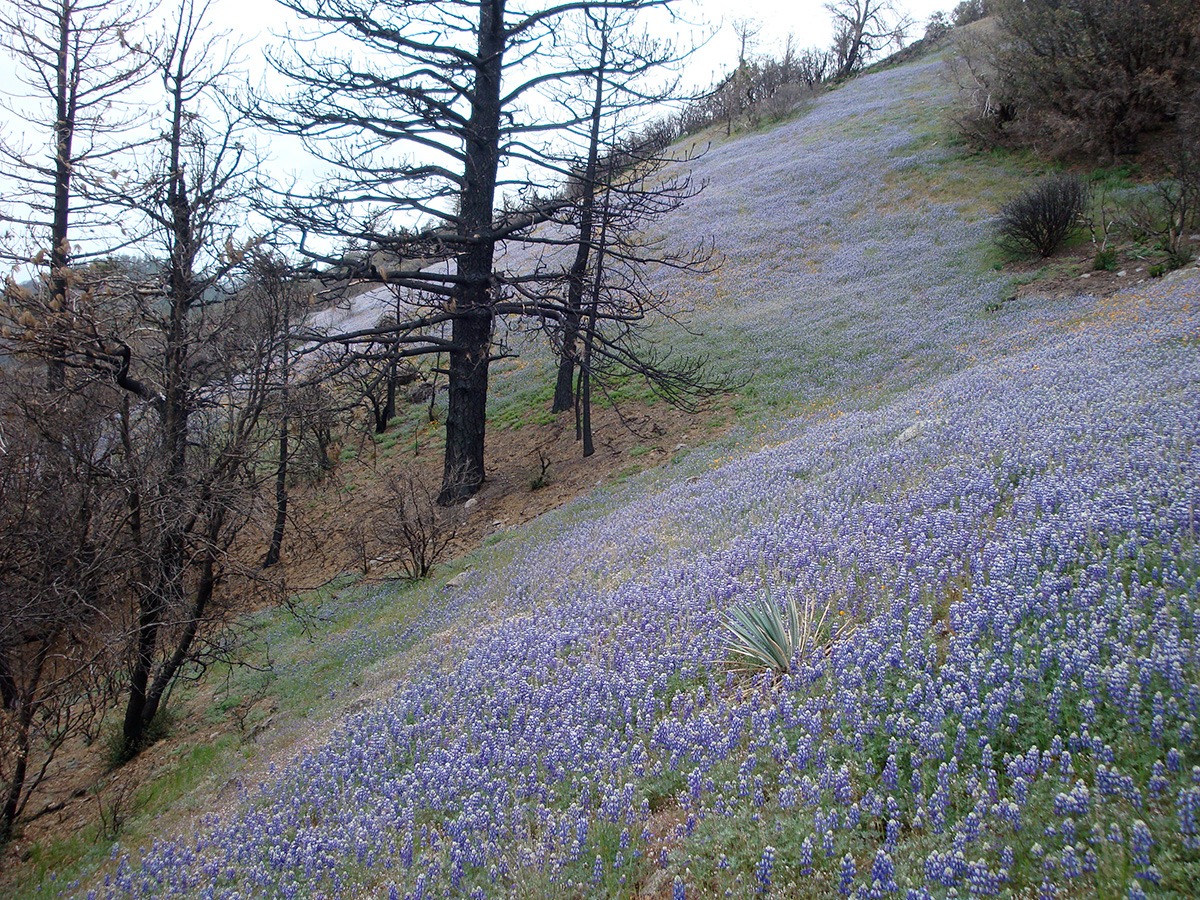
Forged by Fire
Read Les’s account of the aftermath of the Big Sure fire and the “California Lightning Siege” — an early preview of conversations about wildfire and climate change.
It was late April and the height of spring wildflower season. On our several hikes in the rugged hills of the Los Padres National Forest I got to observe Les in action in the field for the first time. To my initial surprise (and mild annoyance) he wasn’t able to help identify the particular species of the wildflowers we were seeing, and wasn’t particularly interested in that. But while I was obsessing over the individual plants, he was looking for – and pointing out – the overall vegetation patterns and the ways in which they had shifted in response to the recent fires. He was able to contrast what he was seeing on the land in the present with his prodigious memory bank, built up over many years of exploring this area (he had strong family roots in the Carmel/Big Sur region), and to read both the major and subtle changes in the landscape accordingly. To see this rugged and dynamic landscape through his eyes was a revelation. His subsequent article, “Forged by Fire,” in the October 2009 issue of Bay Nature is a masterful introduction to the science of wildfire in the California coast ranges, grounded in Les’ personal connection to that magical Big Sur coastline, yet opening up the bigger picture of the role of fire in shaping that landscape.
Les’ life-long connection to that region derived from the fact that his famous grandmother, the first Lester Rowntree, had settled in the Carmel Highlands in the 1920s after emigrating from England as a young woman. Given his grandmother’s fame and legacy as one of the progenitors of the native plant movement in California — a self-trained botanist, she wrote two of the first authoritative treatments of our native flora, Hardy Californians (1935) and Flowering Shrubs of California (1936) — Les got used to identifying himself as the other Lester Rowntree. Indeed, he reveled in the confusion, because it allowed him to reinforce and renew his grandmother’s legacy. In 2006, Les oversaw (and wrote an introduction to) the reissue of Hardy Californians, taking great pleasure in the opportunity to reintroduce his grandmother to a new generation of California native plant enthusiasts and regale audiences up and down the state with stories of this pugnaciously independent, idiosyncratic, and convention-defying woman.

Les Rowntree himself did not take a straight line into the field of environmental science, though he was interested in the natural world from the very beginning, perhaps in part because of his grandmother. And it certainly didn’t hurt that he was born and raised close to nature in that beautiful part of California where the wild Pacific meets the rugged ridges and canyons of the Santa Lucia Mountains. His family moved to Berkeley in the late 1940s, where Les attended Berkeley High. But he continued to feed his love of the outdoors by honing his rock-climbing skills in the Berkeley hills and working nights and weekends at the pioneering outdoor gear store, The Ski Hut.
Remember, they are an exotic species in the Western United States, and are rapidly increasing their geographic range and range of habitats. Are they outcompeting or excluding native species in the process? How would we know? We have done almost nothing to monitor changes in the assemblage of mushroom species in areas before and and after the incursion of death caps.
Further Reading
Pringle et al, “The ectomycorrhizal fungus Amanita phalloides was introduced and is expanding its range on the west coast of North America,” Molecular Biology 2009
Lockhart et al, “Simultaneous emergence of multidrug-resistant Candida auris on 3 continents confirmed by whole-genome sequencing and epidemiological analyses,” Clinical Infectious Diseases 2017
Battalani et al, “Aflatoxin B1 contamination in maize in Europe increases due to climate change,” Scientific Reports 2016
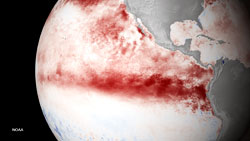
El Niño: Beyond the Hype
Between 2015-2016, Les worked with Bay Nature on a series that went beyond the headlines of the “monster” El Niño. He wrote many of the stories himself, and you can read them all here.
He later acknowledged that he had floundered academically in his early college years (in the late 1950s), being much more interested in sailing, mountain climbing, skiing, and folk music (with a brief detour into stock car racing) than in school studies. At loose ends, he took up an offer from an uncle to travel in Canada with his cousins, perhaps in part, to “find himself” while adventuring. Upon returning home, he found instead a draft notice from the U.S. Army, and was shipped off to Germany—then in the midst of the Berlin Wall crisis—where he was assigned to work as a reporter for the armed forces newspaper, Stars & Stripes. He was eventually honorably discharged as a conscientious objector, but in the meantime his travels around Europe as a reporter awakened his interest in the mountain ecology of the Austrian Alps, a subject he returned to often in his later professional life.
Over the course of those years of work and travel, Les became aware of the then-nascent fields of environmental geography and conservation biology. So once out of the Army, he moved back to Carmel, worked part-time as “hippie carpenter” in Big Sur, welcomed daughter Erika into the world, and enrolled in San José State to complete his Bachelor’s degree. He was then accepted into the graduate degree program in Geography at the University of Oregon, where he focused his studies on the human and biological ecology of mountain ranges. He got both a degree and, just as important, a treasure trove of stories from a summer spent (with his wife and daughter) as a mountain-top fire lookout in the wilds of the southern Cascades.
After receiving his PhD in 1971 (with a dissertation on the cultural and heritage landscape of Salzburg, Austria), Les returned to the Bay Area and was hired, much to his delight, to teach in the Department of Geography at San José State. The following year San José State established one of the first departments of Environmental Studies in the country. Les eventually transferred his position there, and stayed for the rest of his professorial career. Being a rigorous but empathic educator was Les Rowntree’s true life’s work, infecting his students with his passion for understanding the natural world, encouraging them to pursue careers in science, and use their knowledge to help make the world a better place.
Following his retirement from San José State in 2005, Les focused on updating the widely adopted and influential environmental studies and geography course textbook, Diversity Amid Globalization: World Regions, Environment, Development (Pearson), that had been initially published in 2000 with Les as its lead and coordinating author. The text is now in its 6th edition, along with a 7th edition of its slimmed-down companion, Globalization and Diversity.
In addition, he continued to pursue his wide-ranging interests (climate, weather, wildfire, archaeology, native plants, classical and folk music), while keeping up with his favorite students and colleagues, taking long walks in Tilden Park above his home in the Berkeley hills, and spending more time with his wife Margaret Conkey, now a Professor Emerita of Anthropology at UC Berkeley, his two daughters, and three grandchildren. Thanks to the loving care of his family, Les was able to die peacefully at home, right next to an open door that looked out onto a back yard filled with some of his favorite California native plants.


